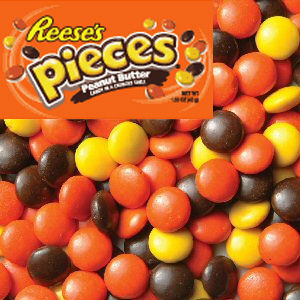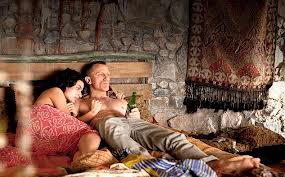 When Director Steven Spielberg wrote his screenplay for E.T.: The Extra-Terrestrial, the script called for a trail of M&Ms candies to be made for E.T. to follow, but in the movie, ultimately Reese’s Pieces became the favorite of E.T. Makers of M&Ms, the Mars company did not want to be associated with the alien character and did not want to bankroll the publicity of the film which was a Spielberg requirement (Steinbrunner, 2008). Rut-roh. Oops. Hersheys did. Reese’s Pieces sales exploded with an increase of 65% for a total of $35M in sales in 1983 (Van Biema, 1982).
When Director Steven Spielberg wrote his screenplay for E.T.: The Extra-Terrestrial, the script called for a trail of M&Ms candies to be made for E.T. to follow, but in the movie, ultimately Reese’s Pieces became the favorite of E.T. Makers of M&Ms, the Mars company did not want to be associated with the alien character and did not want to bankroll the publicity of the film which was a Spielberg requirement (Steinbrunner, 2008). Rut-roh. Oops. Hersheys did. Reese’s Pieces sales exploded with an increase of 65% for a total of $35M in sales in 1983 (Van Biema, 1982).
“I have no doubt that if Jesus was walking around today he’d be sponsored by Birkenstock.” (Barrie, 2012)
Product placement is a form of advertising used in movies and familiar to audiences everywhere. It can add credibility and realism to the story and if done in meaningful way, can be an effective in reaching an audience, even those who are marketing-adverse. In the old days, the production designer or set dresser would just gather products and reach out to companies to get legal clearances for their use on camera. Now of course, there are agencies and agents dedicated to product placement in film and television. A newer term that’s emerging in regards to product placement is product integration which typically refers more to product within television shows (think Coke cups on the American Idol Judges’ desks). Some brands are so essential to the movie brand that together they create an iconic image. Imagine Tom Cruise without Ray Bans in Risky Business or Tom Hanks without Fedex in Castaway.
Not shaken, not stirred, just open with a bottle-opener.
Well, that’s what happened on the last James Bond movie Skyfall. There are few beverages as iconic to a movie franchise as the martini is to the James Bond. So when Bond producers announced the deal with beer maker Heineken for $75 million to feature their product in Skyfall as well as other integrated marketing efforts, fans balked. Producers claim due to the high costs of the film and the director’s vision, the deal was necessary (Barrie, 2012). There are those die-hard fans who argue, that a beer is not inherent to the Bond character because 007 is a man of elegance and the vodka martini is a key part of that character (Hastings, 2012) as written by Ian Fleming. That said, many Bond movie plots have strayed far away from Fleming’s original character. So the dilemma is that as a filmmaker, do you choose between not making a project with the scope and magnitude you think the project deserves or taking the cash and compromising a little bit of the character?
Skyfall ended grossing over a billion dollars internationally and Daniel Craig, the filmmakers Michael Wilson and Barbara Broccoli, the movie studio and Heineken seem pretty happy.
Milissa Douponce, 541 Section A
Resources
Barrie, J. (2012). James Bond drinking Heinken in Skyfall? The Independent. Retrieved from http://www.independent.co.uk/voices/comment/james-bond-drinking-heinken-in-skyfall-whatever-next-8226917.html
Hastings, C. (2012). Vodka Martini, James? No thanks, mine’s a Heineken – just one of the £28m worth of product tie-ins in the new Bond movie. The Daily Mail Retrieved from http://www.dailymail.co.uk/news/article-2210665/Vodka-Martini-James-No-thanks-mines-Heineken–just-28m-worth-product-tie-ins-Skyfall.html
Van Biema, D. (1982). Life is sweet for Jack Dowd as Spielberg’s hit film has E.T. lovers picking up the Reese’s Pieces. People.com. Retrieved from: http://www.people.com/people/archive/article/0,,20082729,00.html
Steinbrunner, J. (2008). The ten most shameless product placements in movie history.Retrieved from: http://www.cracked.com/article_16574_the-10-most-shameless-product-placements-in-movie-history.html


16 Responses to Why E.T. liked Reese’s Pieces over M&Ms